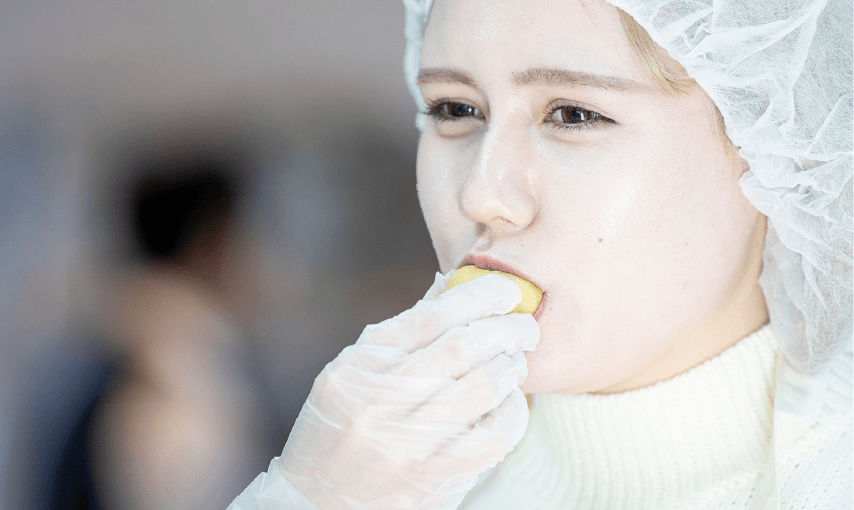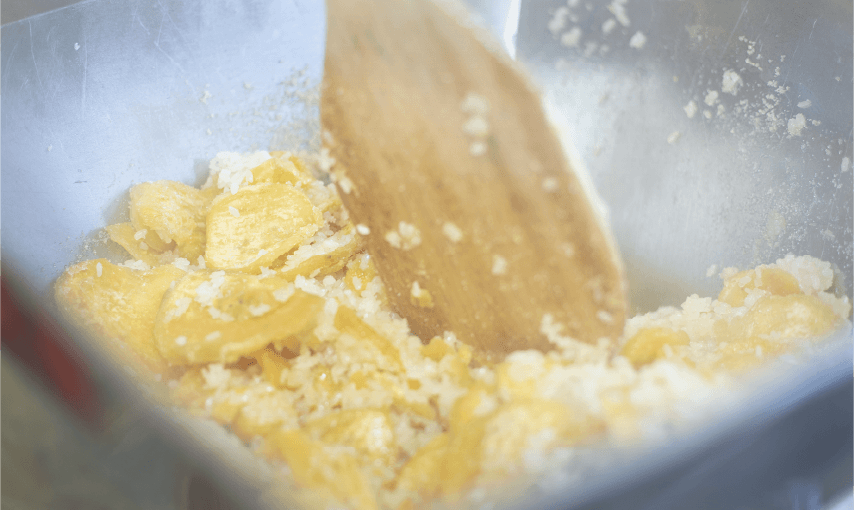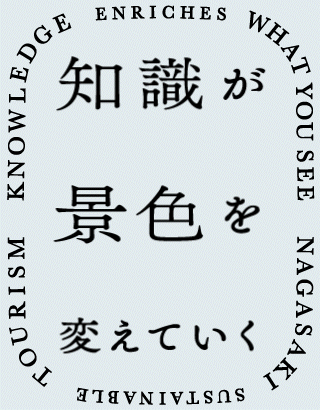



The search for deliciousness
has always been free.
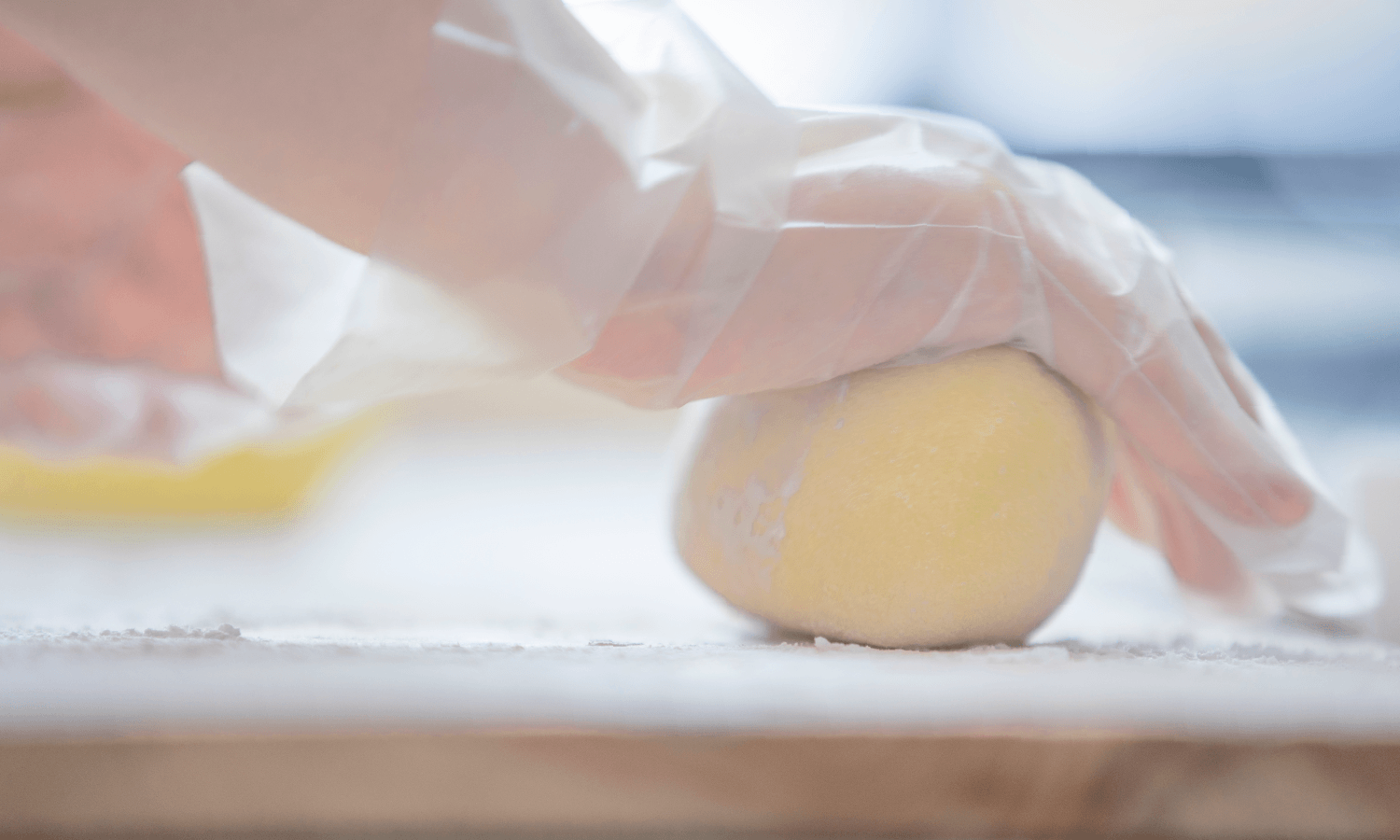
Through communication with farm owners living in Shitsu,
we will learn about harvesting sweet potatoes and slicing them to dry in the sun (in fall only),
and then using the sundried sweet potatoes to make kankoro-mochi (sundried sweet potato rice cakes) unique to this region.
After that, we will enjoy a delicious meal together with these kankoro-mochi.

KnowledgeKankoro-mochi, a unique treat from Sotome
In small, unprepossessing villages like this the people outwardly professed not to be Christians while secretly being believers. There is little flat land, making it hard to grow crops. The main type of food grown here is sweet potato. For mountain villages like this, Kankoro-mochi (sundried sweet potato rice cake) use the sweet potato to fill out the amount of precious rice (the staple food of the Japanese) used. This was an inspired innovation that gave them sufficient food to live.
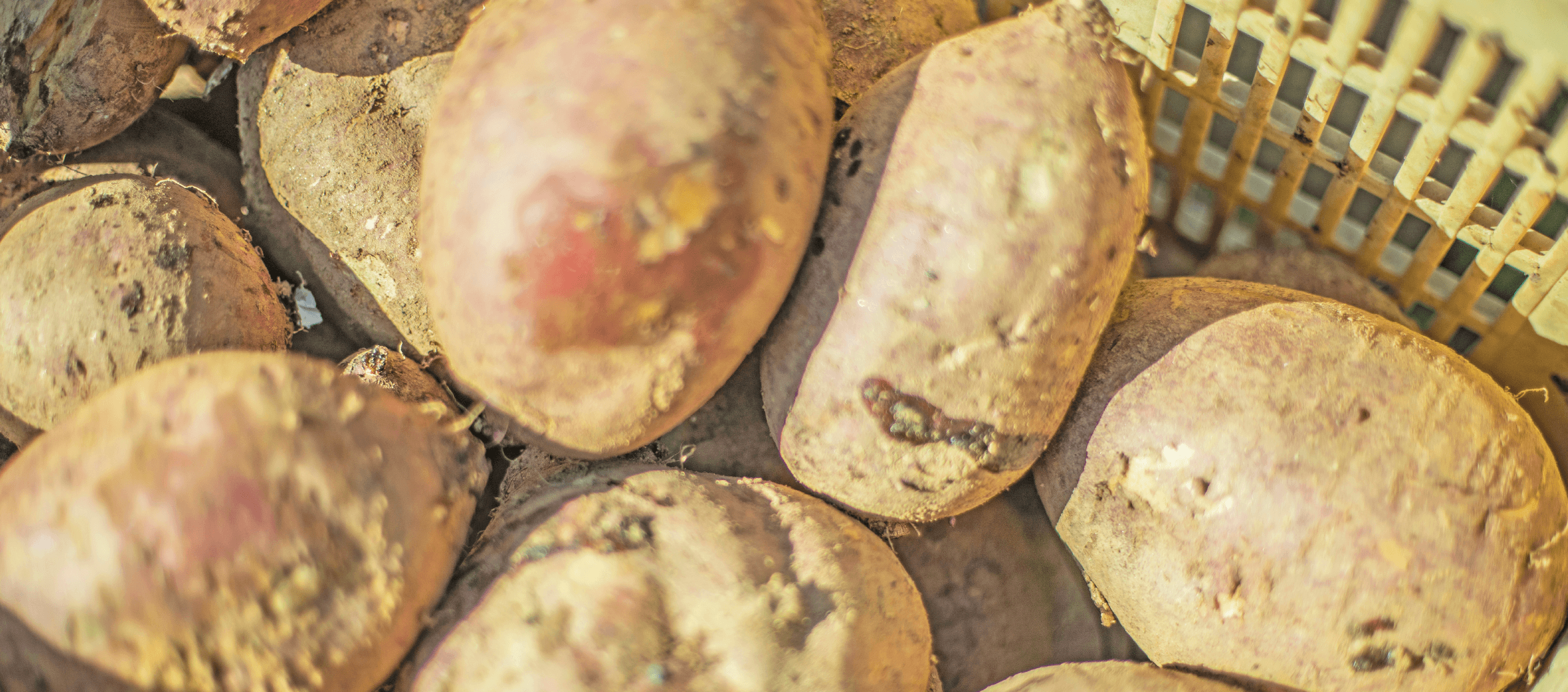
Homegrown sweet potatoes and mochi rice
If you visit in spring, you can try planting rice in the fields. Visitors in fall can try digging up, washing, peeling, and slicing sweet potatoes, then cooking them in a wood-fired kiln until they become hard before they are left to dry in the sun for a week. Sundried sweet potatoes are familiarly called kankoro in Sotome. The kankoro is steamed with mochi (sticky) rice until they combine together. The mixture is then placed in molds to form the rice cakes. Traditional methods handed down from the past will be used to make the kankoro-mochi.
The aging population and low birth rate in this area mean less and less people are making kankoro, so getting visitors to the area to help reduces the workload. This activity also raises awareness of the local people toward their region and to maintain their history and culture by cherishing kankoro-mochi.

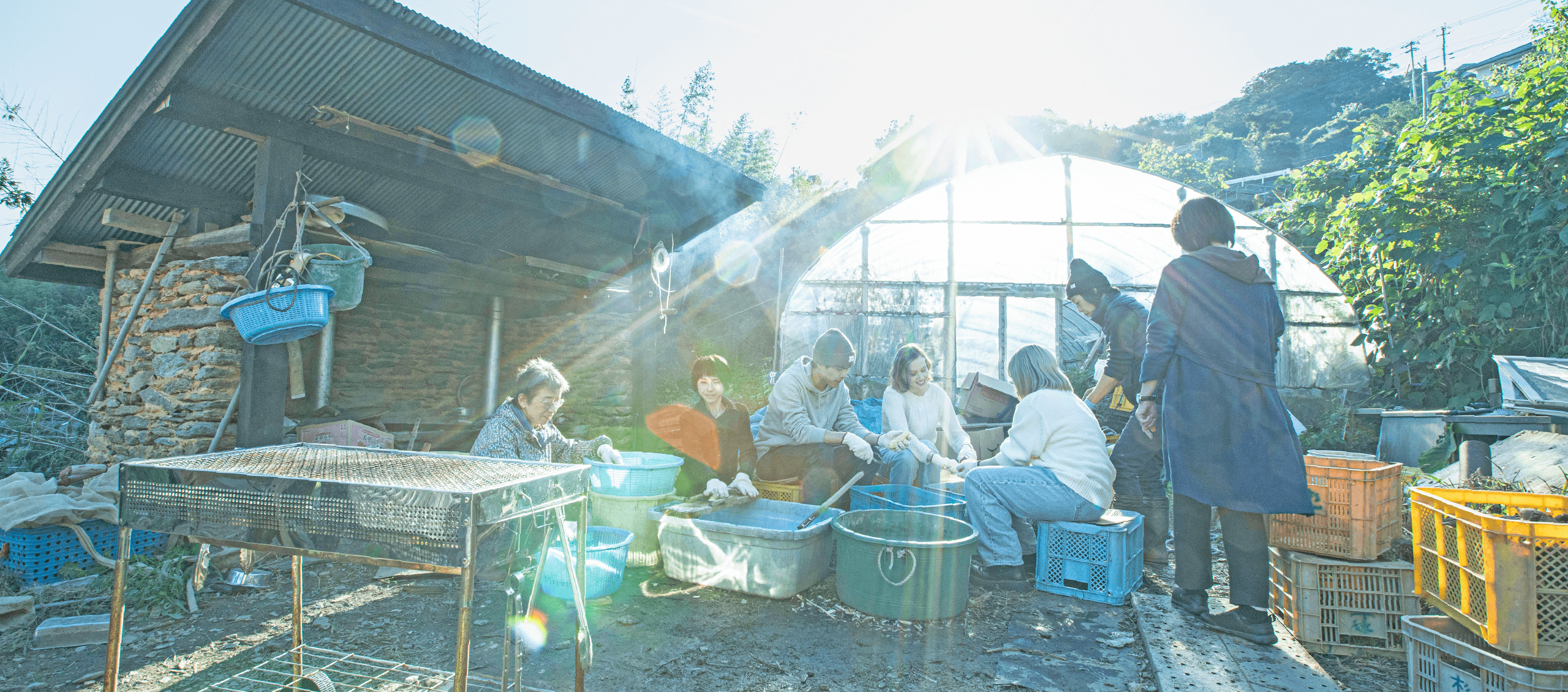
People are helping the locals on this day while enjoying chatting with them

Originally from this area, Mr. Sugiyama returned to it to open Shitsu Norakusha in 2021, taking the role of its leader. He handles everything, from growing the sweet potatoes and mochi (sticky) rice and doing the advance preparation for the kankoro-mochi to cleaning up afterward.
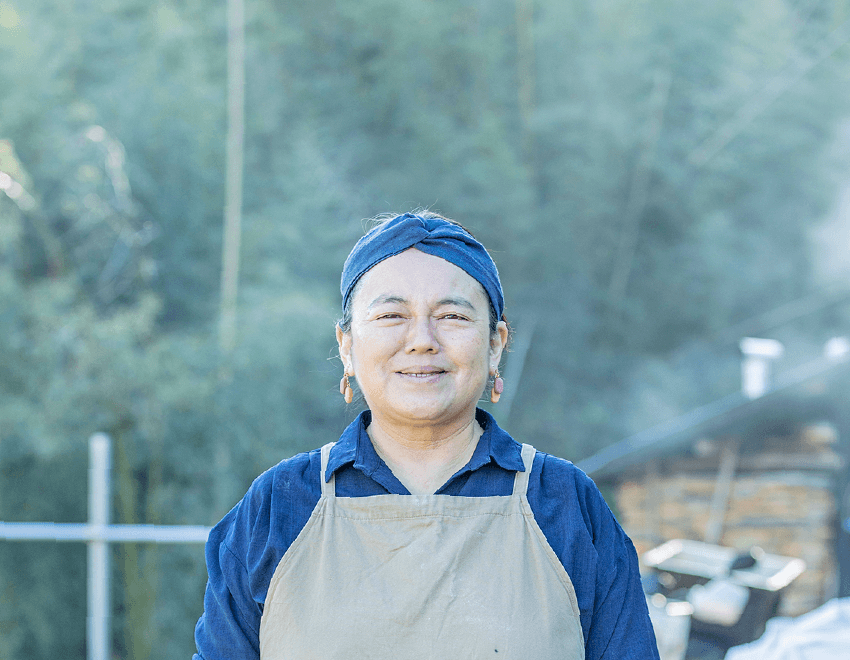
Ms. Sugiyama worked as an elementary school teacher until the start of Shitsu Norakusha. Born in Tokyo and raised in Kanagawa, she became fascinated with Kazutoshi’s kankoro-mochi when she visited Nagasaki. Now she runs a café and thinks of nothing else but kankoro-mochi from morning to night.
Knives made by the local Kuwahara ironworks with traditional methods are used to slice the sweet potatoes.
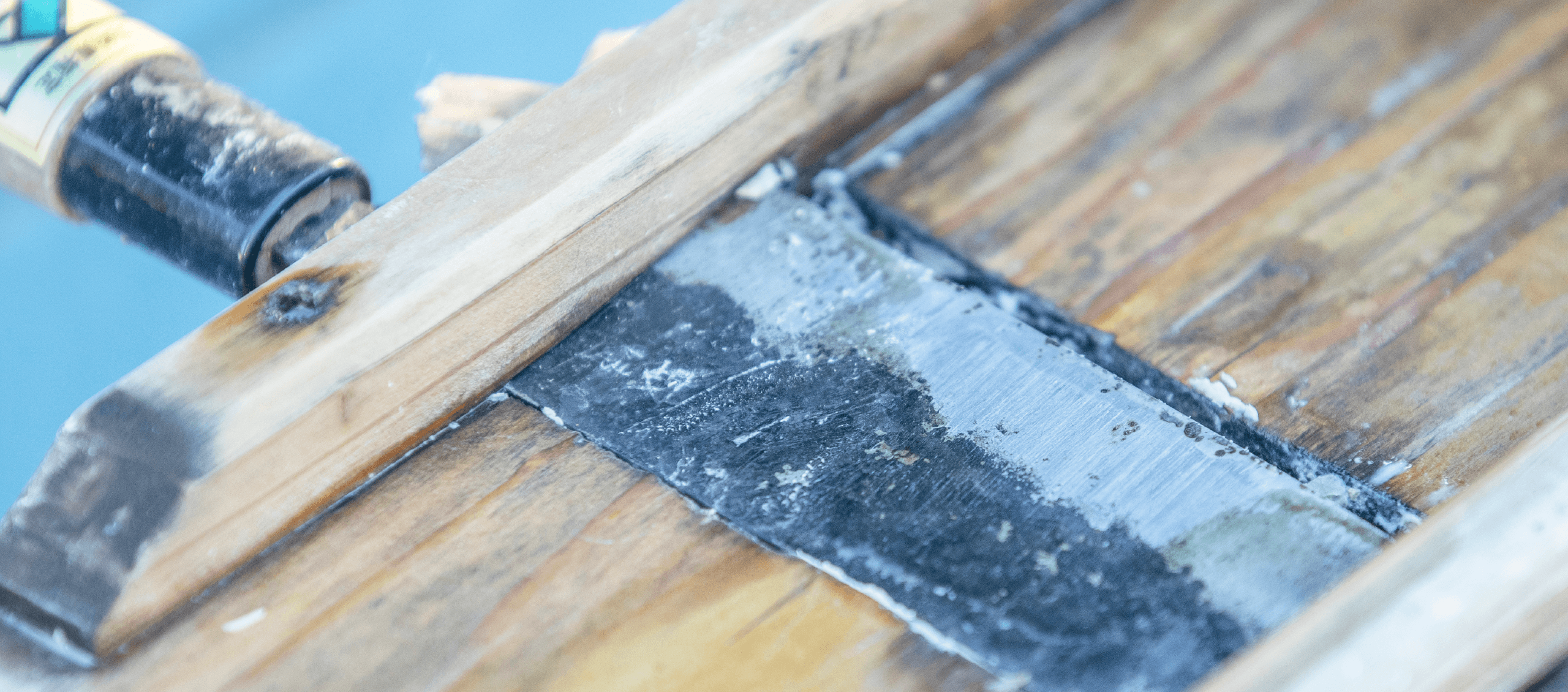
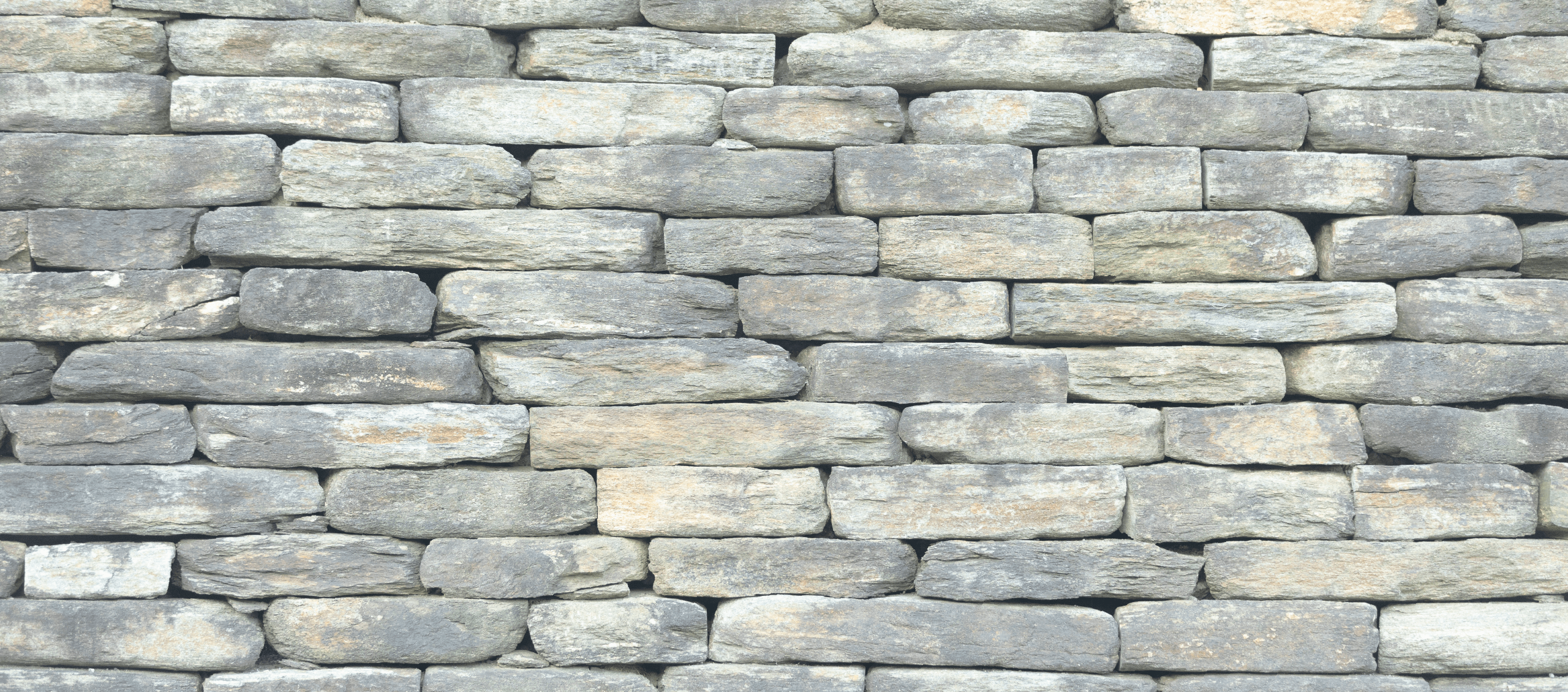
Many stone fences made with onjaku rock (a local type of crystalline rock) can be seen in the town.
Onjaku rocks were used in Shitsu to cope with its lack of level ground. Stone fences were necessary to stop the loss of soil from the steep slopes. The many onjaku rocks found when clearing the soil were smoothed flat so that they could be piled together. This stonework can be seen everywhere, from around homes and the slopes of the fields even to the counter of Shitsu Norakusha.
Sustainability
The sweet potatoes are grown without the use of farm chemicals, and the mochi rice is grown organically. The environmentally- and people-friendly methods used make the most of their natural deliciousness.
What was a staple food in the past is now a treat
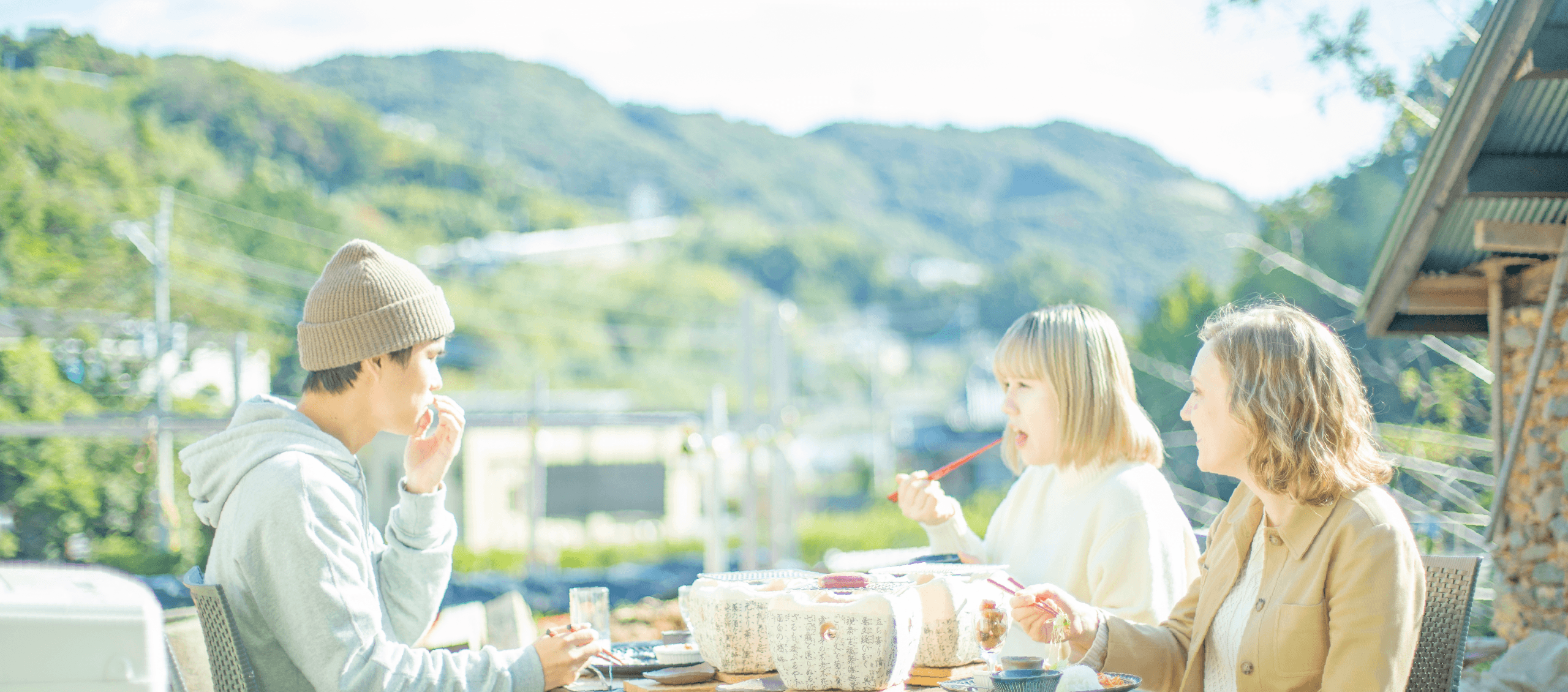
After meeting with the local people to make kankoro and kankoro-mochi with a sense of both nature and of humanity, enjoy a lunch based around these rice cakes. Savor many different ways of eating them with contemporary cuisine. Enjoy the food outside when the weather is good. And don’t forget to take some kankoro-mochi home with you as souvenirs.
Sustainability
Experience traditional methods close to those actually used in the past while talking with local people. Bringing more visitors to this mountainous region will help the people of Shitsu to retain their traditional ways.
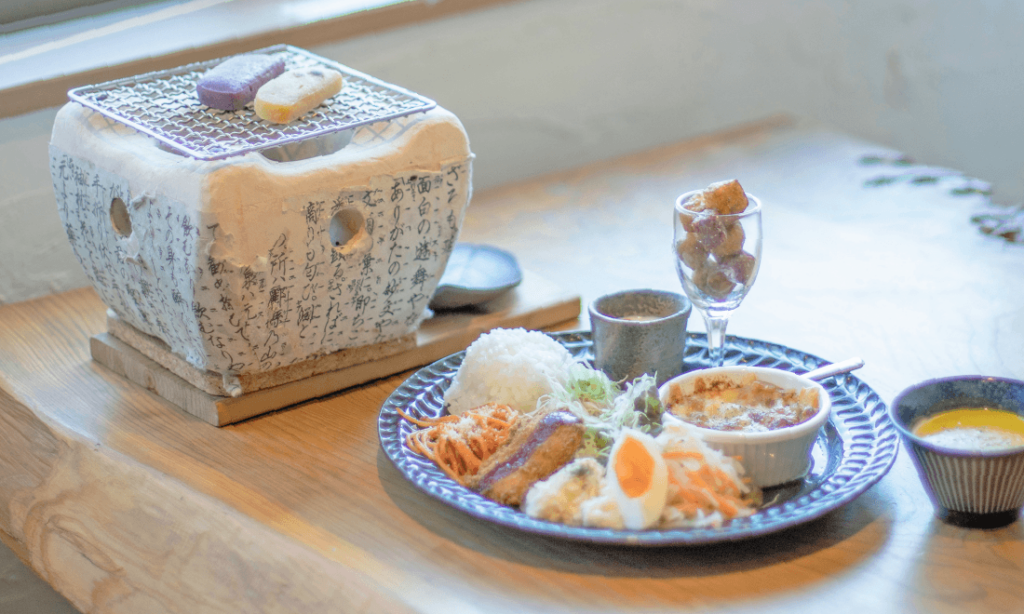

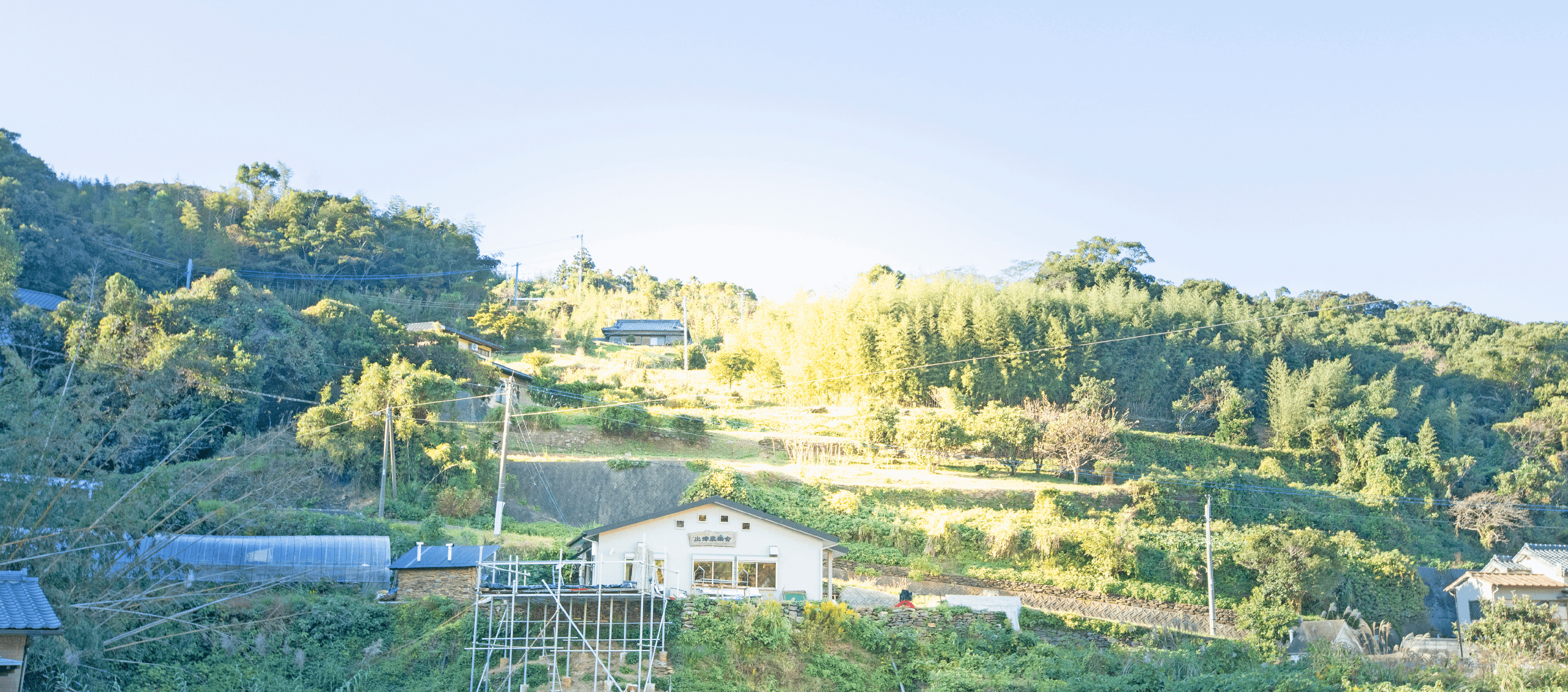
Shitsu Norakusha
Address: 2442 Nishishitsu-machi, Nagasaki City, Nagasaki Prefecture
Open: 11:00 a.m. to 5:00 p.m. on Saturdays, Sundays, and Mondays
Parking is available



